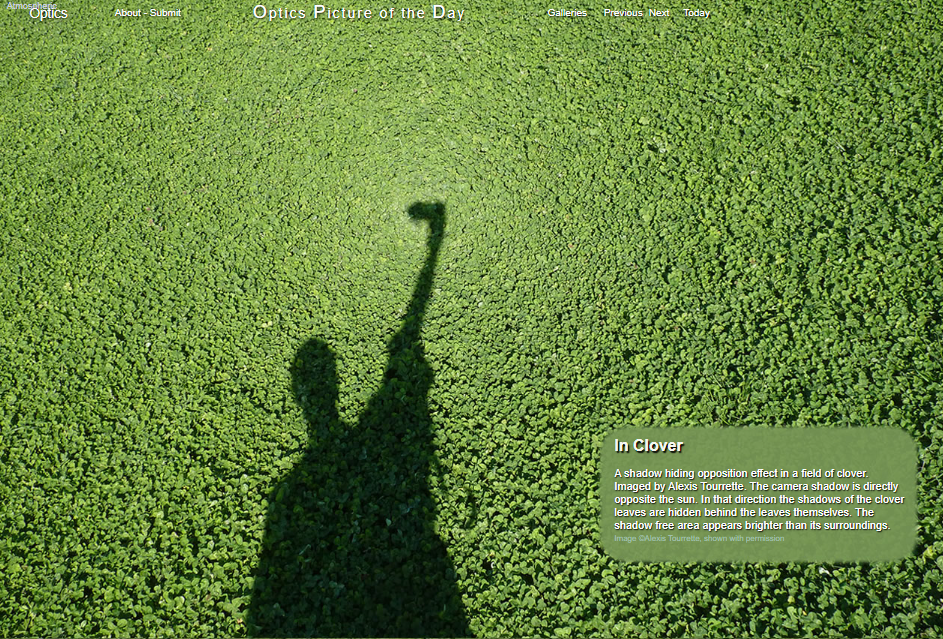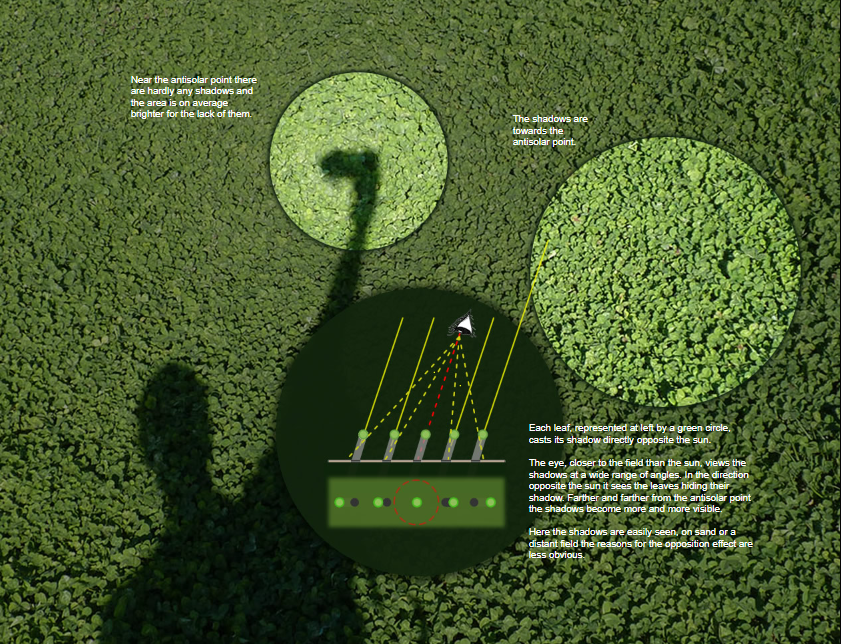Opposition Effect in Clover Field - OPOD
The Opposition Effect in Clover Fields: Unveiling the Shadows
Clover fields, with their lush green leaves and delicate blossoms, hold a captivating phenomenon known as the opposition effect. This optical phenomenon occurs when an object appears brighter when viewed directly opposite the source of illumination, such as the sun. In a clover field, this effect is particularly intriguing due to the interplay between shadows and sunlight. Let's delve deeper into the mechanics behind this mesmerizing phenomenon.
In a clover field, each leaf casts its shadow directly opposite the sun, creating a dance of light and darkness. As an observer, positioned closer to the field than the sun, your eyes capture the intricate interplay of shadows at various angles. When you look in the direction opposite the sun, you witness a fascinating spectacle: the leaves seem to hide their own shadows, resulting in an area that appears brighter than its surroundings.
The opposition effect in a clover field is most pronounced near the antisolar point, where shadows are scarce and the area is noticeably brighter due to their absence. As you move farther away from the antisolar point, the shadows become increasingly visible, painting an ever-changing picture across the field.
While the opposition effect is easily observable in a clover field, its underlying mechanisms may not be as apparent on sandy terrain or in distant fields. In these settings, understanding the reasons behind this phenomenon requires a closer examination.
To shed light on this captivating phenomenon, it is essential to consider the positioning of the sun, shadows, and the observer. The opposition effect occurs because of the interaction between light rays and microscopic particles or irregularities on the surface of objects. When light strikes these particles or irregularities at a specific angle, it scatters more intensely in the direction opposite the source of illumination, creating a brightening effect.
In a clover field, the leaves themselves act as obstructions to their own shadows when viewed from the direction opposite the sun. This occurs because the shadows of the clover leaves are hidden behind the leaves themselves, resulting in a brighter appearance of the shadow-free area. As the observer moves away from the antisolar point, the angle of illumination changes, making the shadows more visible and diminishing the opposition effect.
The opposition effect in a clover field showcases the intricate interplay between light, shadows, and our perception of brightness. It serves as a reminder of the complex and captivating nature of atmospheric optics. By unraveling the mechanisms behind this phenomenon, we gain a deeper appreciation for the hidden beauty that surrounds us.
In conclusion, the opposition effect in a clover field offers a fascinating display of light and shadows. By understanding the interplay between the sun, shadows, and the observer's position, we can unravel the underlying mechanisms behind this captivating phenomenon. Whether it is witnessing the leaves hiding their own shadows or observing the gradual visibility of shadows as we move away from the antisolar point, the opposition effect in a clover field never fails to captivate our imagination and remind us of the wonders of atmospheric optics.

In Clover
A shadow hiding opposition effect in a field of clover. Imaged by Alexis Tourrette. The camera shadow is directly opposite the sun. In that direction the shadows of the clover leaves are hidden behind the leaves themselves. The shadow free area appears brighter than its surroundings. Image ©Alexis Tourrette, shown with permission

Near the antisolar point there are hardly any shadows and the area is on average brighter for the lack of them.
The shadows are towards the antisolar point.
Each leaf, represented at left by a green circle, casts its shadow directly opposite the sun.
The eye, closer to the field than the sun, views the shadows at a wide range of angles. In the direction opposite the sun it sees the leaves hiding their shadow. Farther and farther from the antisolar point the shadows become more and more visible.
Here the shadows are easily seen, on sand or a distant field the reasons for the opposition effect are less obvious.
Note: this article has been automatically converted from the old site and may not appear as intended. You can find the original article here.
Reference Atmospheric Optics
If you use any of the definitions, information, or data presented on Atmospheric Optics, please copy the link or reference below to properly credit us as the reference source. Thank you!
-
<a href="https://atoptics.co.uk/blog/opposition-effect-in-clover-field-opod/">Opposition Effect in Clover Field - OPOD</a>
-
"Opposition Effect in Clover Field - OPOD". Atmospheric Optics. Accessed on April 19, 2024. https://atoptics.co.uk/blog/opposition-effect-in-clover-field-opod/.
-
"Opposition Effect in Clover Field - OPOD". Atmospheric Optics, https://atoptics.co.uk/blog/opposition-effect-in-clover-field-opod/. Accessed 19 April, 2024
-
Opposition Effect in Clover Field - OPOD. Atmospheric Optics. Retrieved from https://atoptics.co.uk/blog/opposition-effect-in-clover-field-opod/.